Since several decades ago, optical networking technology has been developing quickly. Fiber optics is becoming a key component of the telecommunications infrastructure due to its high bandwidth and low attenuation characteristics. Researchers have looked into numerous fiber optic cable technology and cutting-edge hardware and programmability, boosting transmission up to gigabit and beyond to meet the ever-increasing data demand in the telecommunications business.
Contents
Recent developments in optical networking technology
Over 30 years ago, optical communication (OC) for data transmission was first demonstrated. It uses two basic technologies: wireless Free Space Optical (FSO) transmission and fiber optic technology using a physical wire. In terms of distance, bandwidth, speed, dependability, and other improvements that support its use, optical fiber technology has advanced significantly over time.
In order to meet the constantly rising demands for higher capacity, lower energy consumption, and its cost in system design to grant novel applications and emerging new technologies in the optical domain, researchers from all over the world and different expertise from different fields such as electronics, communications, photonics, and signal processing, have contributed side by side.
1. Elastic optical network (EON)
The Elastic Optical Network (EON) is a network architecture designed to accommodate the increasing demand for flexibility in optical network resource distribution. It enables flexible bandwidth allocation to support different transmission systems, such as coding rates, transponder types, modulation styles, and orthogonal frequency division multiplexing. However, this flexibility poses challenges in the distribution of resources, including difficulties in network re-optimization, spectrum fragmentation, and amplifier power settings. Hence, it is crucial to closely integrate the control elements (controllers and orchestrators) and optical monitors at the hardware level to ensure efficient and effective operation.
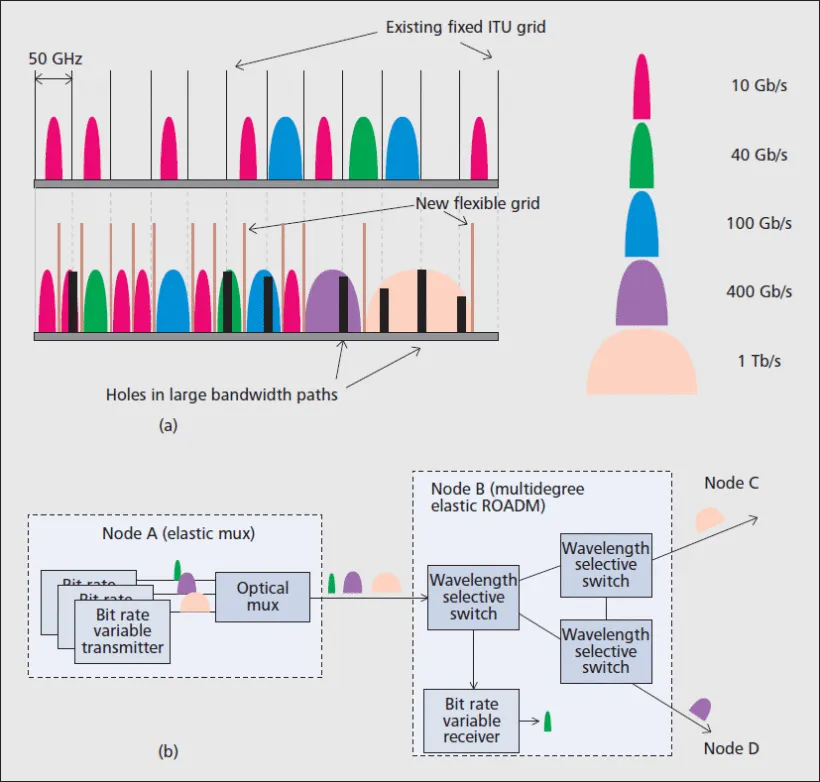
Image Credit : ieeexplore.ieee.org – Elastic optical network
2. OC super-channel with high capacity and speed
A workable alternative that enables extremely fast, long-distance, spectrally efficient, and big data capacity links with dependable performance are the super-channel new technology. It uses dual polarization-quadrature phase shift keying to transmit data over a single channel using a number of sub-carriers (DP-QPSK). Over a single channel, these special modulation styles can transmit data at speeds of more than 100 Gbps. However, they are limited in the number of supported links and suffer from multipath fading, nonlinearity loss, phase distortion loss, and other problems. Coherent detection and digital signal processing (DSP) at the receiver terminal are used to reduce these restrictions for better performance.

Image Credit : best-metatrader-indicators.com – OC super-channel system
3. Network coding (NC) for physical OC security
In optical networks, Network Coding (NC) is employed to safeguard against link failures, boost multicasting’s spectral efficiency, and shield private connections from prying eyes. In their journey through the network, the private signals are XORed with other signals that were sent via various nodes. Either at the source node or intermediate nodes, the signals are merged.
Since an eavesdropper will obtain a variety of signals from several connections, making it more difficult to decrypt the confidential signal, combining signals through NC strengthens the security of confidential connections. Studies demonstrate that NC offers a thorough security envelope for private communications with minimal spectrum utilization.
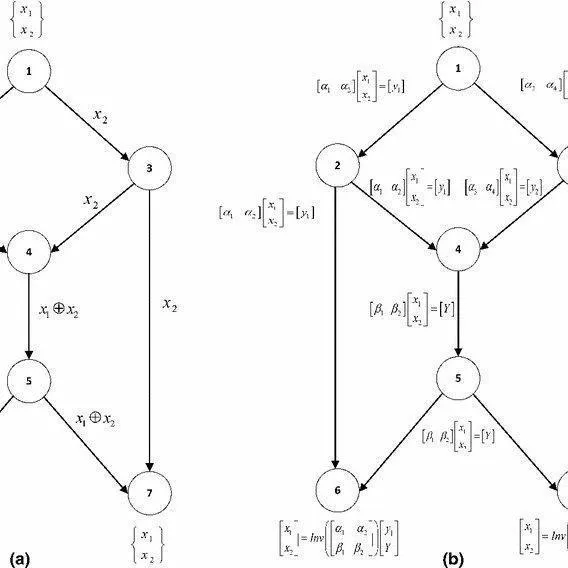
Image Credit : researchgate.net – XOR network coding based on butterfly topology
Technology used to implement OC capabilities
The need for fast solutions is expanding as the demand for very large capacity and high-speed channels for heavy data transfer grows. In order to address the transmission demand and security issues, a wide range of solutions utilizing optical fiber technology and free-space wireless channels have been successful.
1. OAM multiplexing for secure optical communications with high capacity
The orthogonality of the OAM beams is used by orbital angular momentum (OAM) to enable effective demultiplexing. Data transfer applications frequently employ free-space communication networks that employ radio frequency (RF) or optical waves for communication. A communication system’s capacity is boosted by multiplexing and transmitting numerous independent data streams concurrently.
This is accomplished by utilizing electromagnetic (EM) wave characteristics like time, wavelength, and polarization. Effective multiplexing and demultiplexing of multiple data streams are possible.
There is a growing need for very high bandwidth; hence new types of data channel multiplexing are being developed to meet that need. We can get very high xTpbs speed communications by combining OAM multiplexing and polarization.
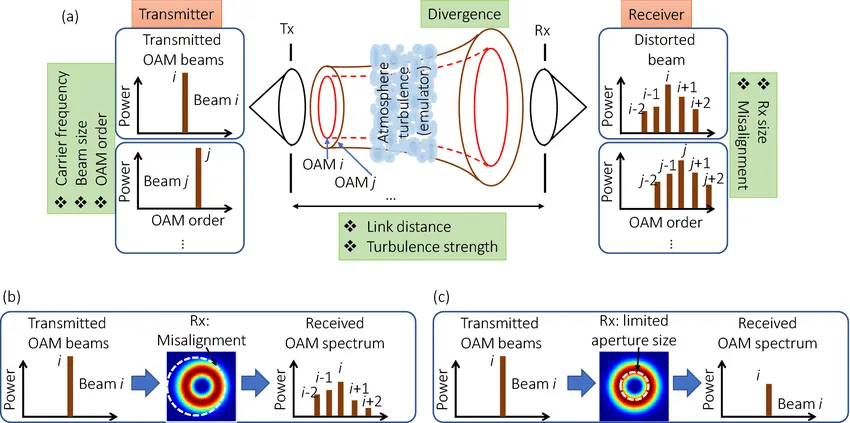
Image Credit : researchgate.net – THz communication link using OAM multiplexing
2. Secure, high-speed, and bandwidth OC based on Chaos
In a secure OC, chaotic systems offer physical layer security. The chaotic carrier’s bandwidth determines how much data may be transmitted in chaos-based secure communication. The chaotic carrier can sustain higher transmission rates, the broader its bandwidth.
Various methods have been proposed to increase the bandwidth of chaos, including mutual injection, optical injection, heterodyning couplings, fiber propagation, feedback with parallel-coupling ring resonators, and self-phase-modulated feedback with a microsphere resonator.

Image Credit : researchgate.net – Two-level secure system based on Chaos
3. Intensity modulation signals for optical communications’ physical layer security
Attackers cannot intercept the sent encrypted text due to employing a Y-00 quantum-noise randomized stream cipher. This technology combines physical randomness with mathematical multi-level signalling encryption to deliver excellent performance and reliable security. Extremely high-order modulation, quantum noise, and additive noise are all used. Because there is a very small chance that attackers will successfully guess the encrypted data, a high level of secrecy has been established.
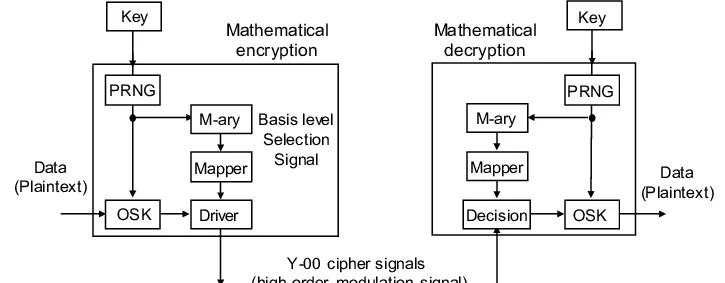
Image Credit : researchgate.net – High-order modulation signal
4. OWC technology for 5G and the Internet of Things
The average transmission rate of the 5G mobile communication systems is predicted to be 1 Gbps, with a peak rate of 10 Gbps. OWC’s distinct qualities—wide spectrum, high data rate, low latency, high security, low cost, and low energy consumption—seem to satisfy the specified requirements. OWC includes optical camera communication (OCC), free-space optics, light fidelity (LiFi), visible light communication (VLC), and (FSO). Its solutions may contribute to comprehensive IoT device connectivity through sensing, monitoring, and resource sharing while also meeting the high-security requirements of 5G and IoT.
Additionally, a hacker device cannot detect the internal optical signal on an external network. Information can be transferred in a very secure way.
5. Optical cameras communications (OCC)
Optical Camera Communications (OCC), an optical communication method, permits the use of a significant amount of unrestricted bandwidth in the optical domain, which is spectrally located between microwave and X-ray wavelengths. Smart devices with cameras and LED flashes are currently available. This offers a practical implementation of optical wireless communication (OWC), using cameras as the receiving module and LED projectors to transmit in the visible light spectrum (VLC).
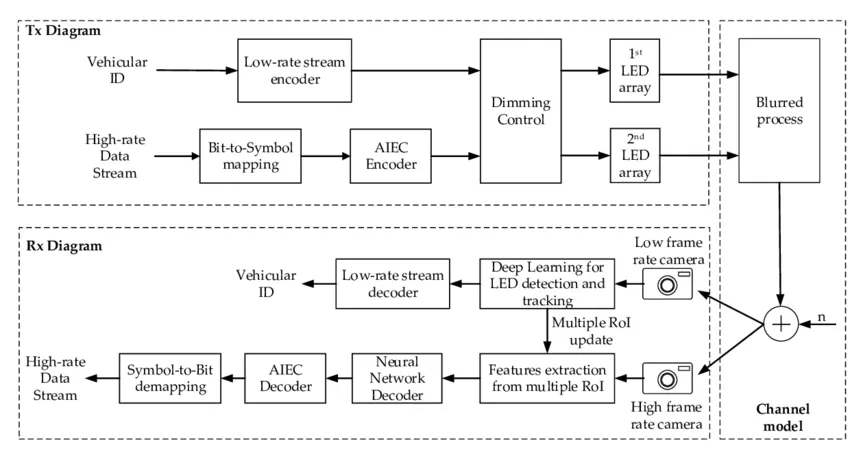
Image Credit : researchgate.net – Optical camera communication system architecture
Optical networking technologies in telecommunication
Fiber optic technology is used in communications since its delivery of bandwidth satisfies the demands of big businesses, cloud operators, and internet content providers. They increase network capacity, effectiveness, and flexibility, enabling on-demand service deployment and configuration. The telecom sector can provide services up to Gbps and more for each user end because of its ability to deliver greater wavelength capacity and wavelengths per fiber in fiber optic technology.
Since 2020 and onward, the volume of mobile traffic has drastically expanded. Tight coordination is essential for effective spectrum usage. As LTE evolves to LTE-Advanced with VoLTE and 5G, operator networks will be required to provide services with larger capacity and reduced latency. In metropolitan and dense urban locations, where the footprint is crucial, operators encounter the greatest difficulty in meeting these requirements. As a result, innovative alternative optical network technologies with high spectrum efficiency are required.
The demand for phone calls, on-demand video services, and cloud-based services over two copper using DSL applications is currently forcing all Customer Service Providers throughout the world to upgrade their bandwidth capacity. Maintaining a low Total Cost of Ownership (TCO) for all services provided to the end user requires a single unified billing and management system for the metro convergence network. This can be achieved through low-attenuation and ultra-bandwidth capabilities of the back-haul network. Service providers can effectively provide these services by allowing simultaneous use of all authorized services, ensuring none of them is interrupted or disturbed.
To provide multimedia services via the converged network topology, ADSL, or Asynchronous Digital Subscriber Line, must be scalable, reliable, and have high-performance capabilities. To make a significant contribution to the digital world, CSP must effectively combine with existing and emerging technologies to update it into a single optical packet network.
Conclusion
Optical networks have emerged as the sole transportation capable of quickly meeting the tremendous data demand. Optical networking has improved in capacity, speed, scalability, and security due to various technologies, enhanced hardware, programmable circuits, and software development.
However, the need for high-speed communication is growing, which has prompted academics to look into additional options for meeting the demand for traffic. Utilizing various optical networking technologies in accordance with the price, demand, and resource availability may be advantageous. The network capacity may be increased by furthering the development of high-speed DSPs at a price that can be made commercially viable.
The development of networks that can handle traffic growth and their widespread deployment results in increased network components, making network management more difficult. Technology advancements alone won’t be enough to make the impending new technologies practical; management and control improvements are also necessary.
Fiber optic cable technology is currently in the early stages of development and expansion. We anticipate it will expand quickly and be used in a wide range of fields, greatly improving our daily lives’ comfort, security, and automation.
FAQs
1. What is optical networking?
Optical networking in optical fiber technology uses light to send data via fiber cables at light speed, making it perfect for long-distance connections with low latency in the middle mile.
An optical network’s fiber cables consist of a core encased in a glass cladding, which traps light inside the cable. Connections to far-off data centers or other sources of data wouldn’t be as quick as they are now without optical networks. The worldwide reach of the internet depends on optical networking to guarantee that a user in the United States can connect to a server in Japan as quickly as physics permits.
Large-scale data centers also link through optical networking. However, this essay will pay more attention to the technology enabling long-haul connections.
2. What is OTN?
OTN, or the Optical Transport Network is a fiber optic technology used in communications industry as standard protocol to switch and multiplex various services onto high-capacity wavelengths throughout the optical network. It is defined in a number of ITU Recommendations, including G.709 and G.798. To increase resilience, streamline operations, improve Service-Level Agreements (SLA), extend reach with Forward Error Correction (FEC), efficiently maximize wavelength fill, and ensure end-to-end service delivery, network providers today rely on OTN-enabled technology in their optical networks.
Because OTN transparently wraps each client/service into a container for transport across optical networks while keeping the client’s native structure, timing information, and management information, it is sometimes referred to as a “digital wrapper.”
3. Which benefits does OTN offer the operator?
The enormous benefits provided by fiber optic technology OTN today give operators a competitive edge. These benefits include increased performance using Forward Error Correction (FEC), streamlined operations, quicker service turn-up, maximized efficiencies, and differentiating services. Operators can thus quickly adjust to today’s erratic bandwidth needs by utilizing next-generation technologies across a programmable optical infrastructure.
FEC corrects and detects faults in the optical link, greatly enhancing tolerance to network impairments encountered in high-capacity transmissions. Using FEC to dramatically boost the system margin for a given Bit Error Rate (BER) and signal power, longer network spans are possible.
By being able to skip amplifier sites, it permits providers to increase the distance between optical repeaters, lowering both capital and operating costs. It also simplifies the topology of the network.
4. What is wavelength-division multiplexing?
With the use of several laser light wavelengths, or “colors,” wavelength-division multiplexing, or WDM, is a technique used in fiber-optic communications to multiplex a number of optical carrier signals onto a single optical fiber. This process, also known as wavelength-division duplexing, permits bidirectional communication over a single fiber and capacity multiplication.
WDM systems are well-liked by telecommunications firms because they enable them to increase network capacity without adding extra fiber. They can tolerate several generations of technology development in their optical infrastructure by using WDM and optical amplifiers without having to redesign the backbone network. The multiplexers and demultiplexers at each end can be upgraded to increase the capacity of a given link.














